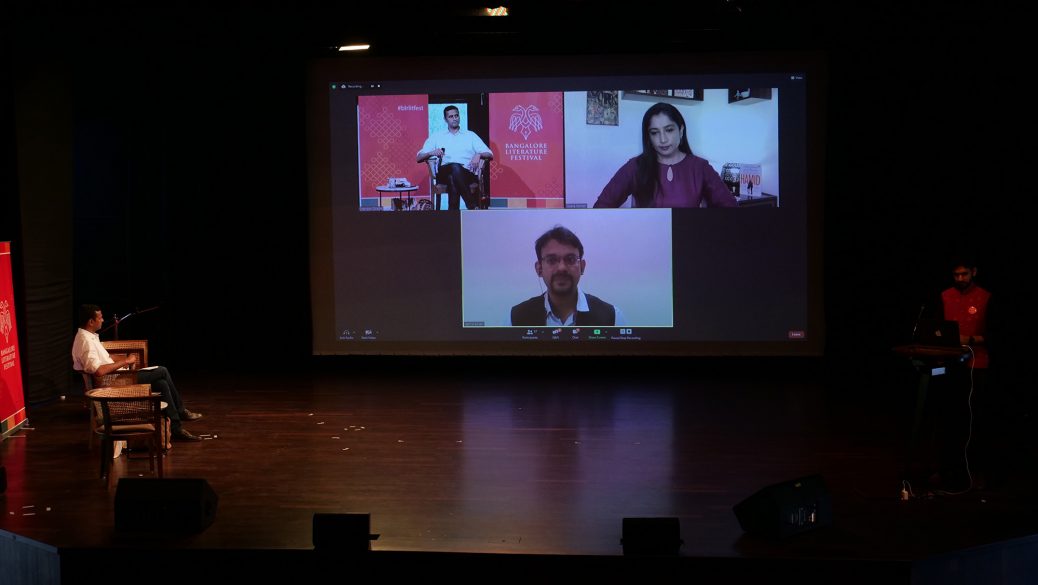All of them revealed that their works are always entrenched in Calcutta, whether in terms of the place, the people, or the experience. Bose discussed the elements she deeply enjoys and loves about Calcutta and its usage in her works like ‘Tread Softly’ and ‘Everglow’. Further, she gave us more insight about the lens through which she looked at Calcutta – as an outsider, yet deeply attached. Coming from a cosmopolitan city, she observed so many contrasts and changes. She shared her thoughts about some bad aspects of Calcutta with us, as well as celebrated the beautiful and warm aspects of it. Bose also talked about the way in which she captured and weaved together rock music and classical music in her work ‘Everglow’, just like the way Calcutta captured these two genres of music. She read out an excerpt from this romance novel for us.
Tony Francis then gave us insight into his experience with Calcutta. As an impressionable young boy whose education took place in Calcutta, he revealed that the city became something of an extended family for him. Nostalgia took hold of Francis for a while when he poured his emotions about Calcutta, its roads, the sidewalks, and other little things. He briefly traced a trajectory of Calcutta from his youth to the present-day city which has changed, just like its name. He discussed his book The Autograph Seeker which is based in Calcutta. He beautifully described Calcutta as a city so passionate that it became a character of its own in his novel. His work draws from the Sans Souci Theatre built during the colonial period (the 1800s) which was then turned into an institution. Francis discussed how this led him to explore this place and much of Calcutta’s history. He too read out an excerpt from his work.
Chowdhury briefly discussed her experience with Calcutta and its influence on her book The Hungryalists. In the discussion, she delved into her love for an era she was never a part of – the 1960s. She discussed this work of hers which was set in that era and revolves around the poetry revolution that Calcutta experienced. She also talks about her engagement with the locals of Calcutta which was an essential part of her research for the book. All in all, this session wrapped together humor, love, truth, experience in a wholesome way.
About the Author: Immersed in the process of unlearning and relearning different values and ideas, Nanditha Murali chooses writing as her medium to approach the world. She is currently pursuing her English (Honours) degree at Christ University, Bangalore.
Like what you just read? Become TheSeer Insider. You will be receiving a letter from us once in a while to help you live a more mindful life. Enter your email id below and click on subscribe. We won’t spam you, ever!












